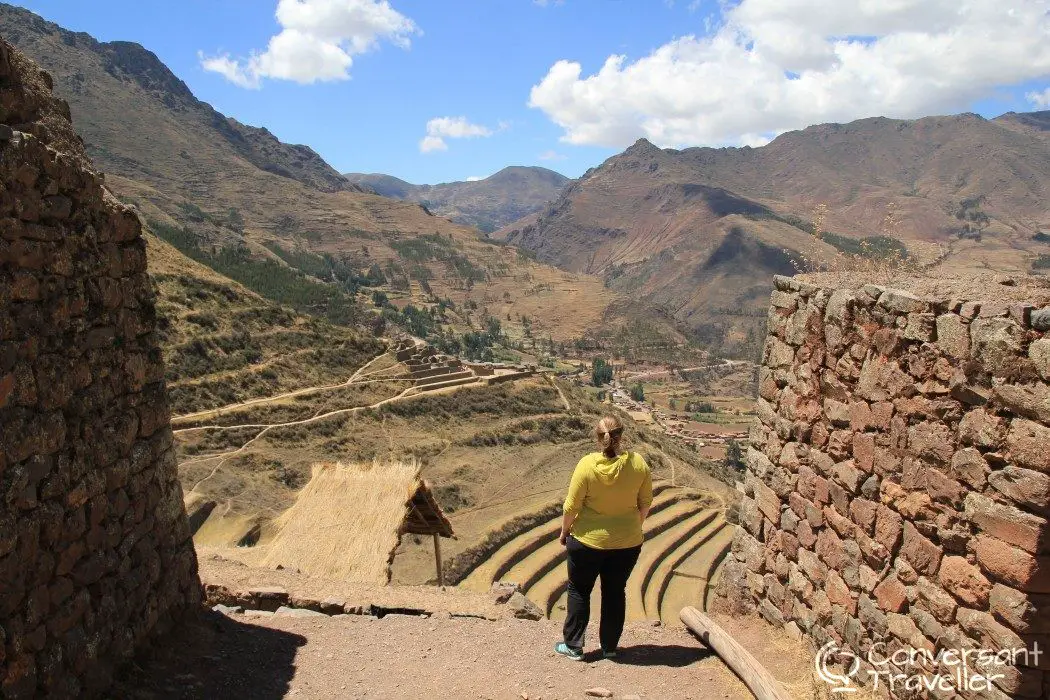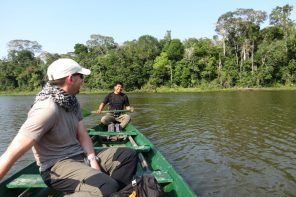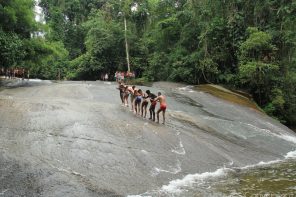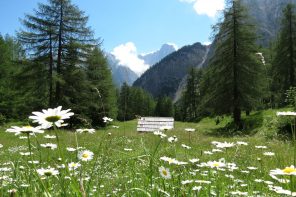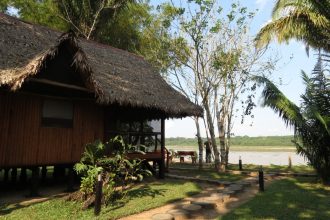So you’re in Cusco and have a few days to spare. You’ve already visited Machu Picchu, walked through the Plaza de Armas from every conceivable angle, and purchased the obligatory knitted llama hat. It’s a bit itchy and the tassels make you look about 12, but you’ve convinced yourself that you absolutely will wear it back home. Honest. You’ve also heard enough panpipe renditions of ‘Hey Jude’ to last a lifetime, tentatively nibbled on a couple of roasted guinea pigs, and had the best workout in ages thanks to all the steep cobbled streets. Just as well considering all the pisco sours you’ve been putting away. Sounds like it’s time to take a few day trips from Cusco.
So arm yourself with a sturdy pair of shoes, grab your woolly hat (if you really must), and a Cusco Tourist Ticket (more about these at the bottom of this post!) and come and explore ancient ruins, salt mines and river rapids of the Sacred Valley.
Here are some of our favourite day trips from Cusco, in the order of our preference and their sheer awesomeness, rather than the standard tourist loop (which will always start with Sacsayhuaman):
Table of Contents
The best day trips from Cusco
PISAC
Best for: superb views without the crowds
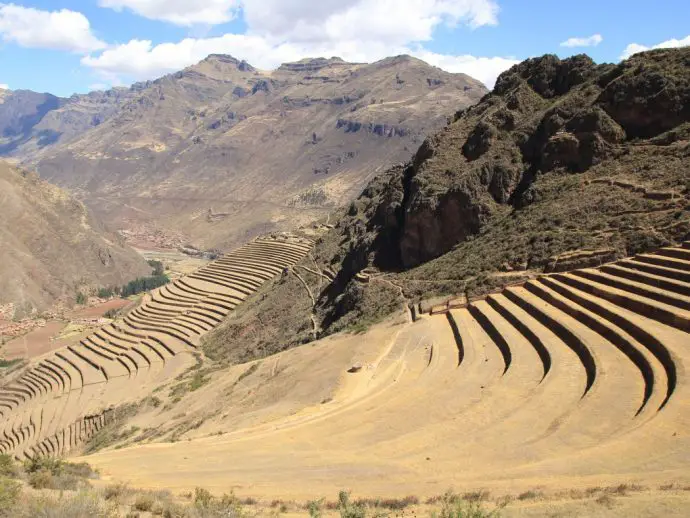
The best day trip from Cusco has to be the incredible ruins of Pisac – we think they’re second only to Machu Picchu in their magnificence, and far less crowded. The Andean town of Pisac was once an important trading post where Incas came to buy goods at the market, and the lofty citadel on the mountainside high above is an impressive site of terraces, temples and superb views.
We loved it so much we’ve written a whole post on it here.
If you’re visiting Pisac on a Tuesday, Thursday or Sunday you’ll see one of the most famous markets in the Cusco region. Whilst there is a section of the market dedicated to selling tourist tat, come on a Sunday if you want to see people from the local Quechua communities come down to town to sell their produce.
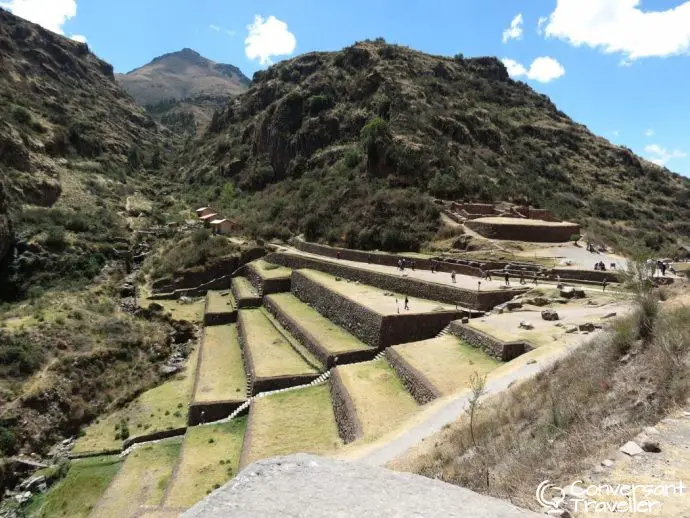
Where: 45 minute drive from Cusco, at the eastern end of the Sacred Valley.
How to get to Pisac: the best way to visit Pisac is on a day trip from Cusco – ask your hotel to arrange a car and driver, or join a tour.
Which Cusco Tourist Ticket: Partial Cusco Tourist Ticket Circuit III
MORAY
Best for: mind-boggling agricultural thinking and complete seclusion
After Pisac, Moray is our favourite Inca site to visit in the Sacred Valley. It’s like nothing else we’ve ever seen, and the innovative thinking behind the site still has us rather in awe. Moray is a deep amphitheatre style complex made up of three bowls of concentric terraces carved into the terrain. It is thought to have been an experimental facility to find the ultimate climate for specific crops, with the deep sides and orientation towards the sun creating different micro-climates. Amazingly the temperature differs by 15 °C (27 °F) between the top and bottom of the terraces. This is no coincidence – this is the same temperature change between sea level and 1000 metres above sea level – despite Moray being approximately 3380 metres above sea level.
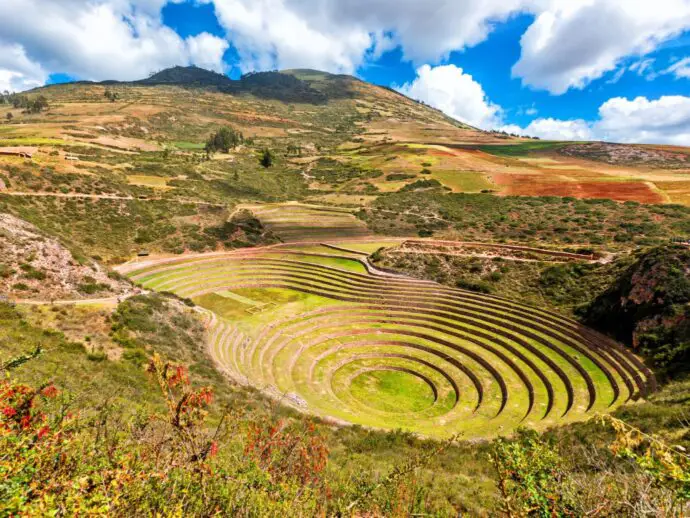
The deepest terrace is about 100 metres, and there are giant stone steps lodged in the walls so you can climb down to the bottom, which we recommend so you can feel the temperature difference yourself. Surprisingly, Moray doesn’t really feature heavily on the Cusco tourist trail so it doesn’t get crowded like the other sites – we didn’t see another person there during our visit. All the more reason to go!
Where: 30 miles from Cusco
How to get to Moray: the best way to visit Moray is on a tour, and combined with Salinas de Maras. Alternatively you can hire a car and driver for the day like we did in Cusco.
Which Cusco Tourist Ticket: Partial Cusco Tourist Ticket Circuit III
SALINAS DE MARAS
Best for: something a bit different and a spot of culture
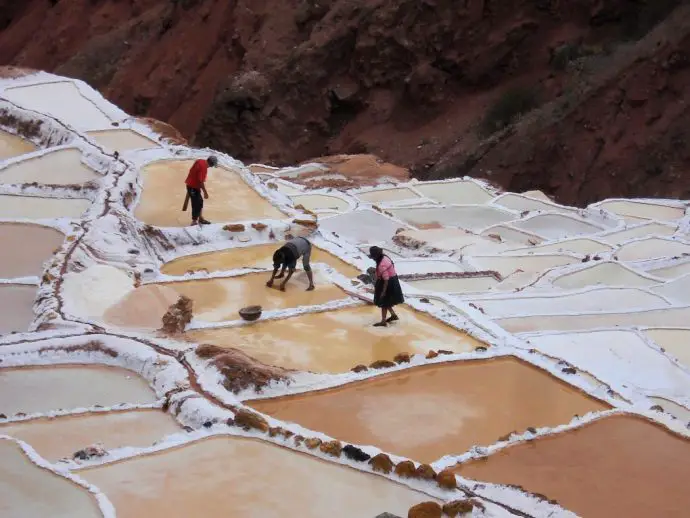
The salt mines (or “pools”) just outside the town of Maras are one of the most dazzling sights in the Cusco region, and not just because the salt glistens in the sun. Salinas de Maras existed even before the Incas came on the scene, and is still used by locals today to extract salt. The technique is little changed since the Inca period, and the process takes about a month from start to finish.
A hot spring at the top of the valley sends small streams of salt-laden water down into the valley, whilst channels capture and divert these rivulets into thousands of small pools, where the salt is collected. When the pools are full, most of the water is allowed to drain away before the basin is blocked up. The remaining water is then left to evaporate, leaving the salt behind to be harvested.
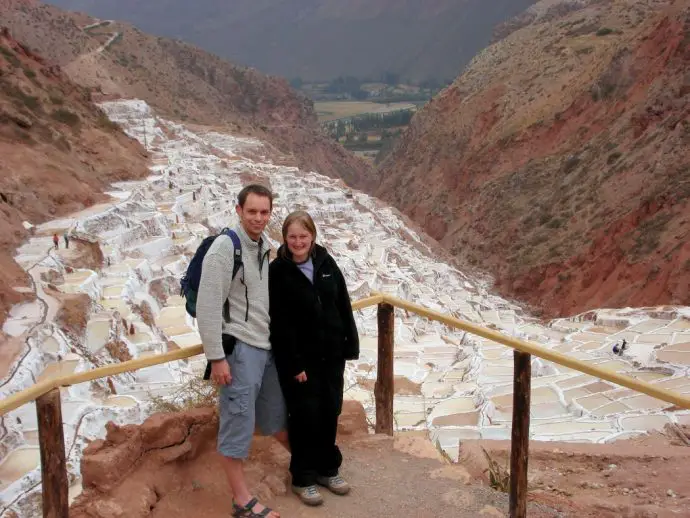
Where: 30 miles from Cusco
How to get to Salinas de Maras: the salt mines are usually combined with a visit to Moray, on a tour or with a car and driver.
Entrance: not included in the Cusco Tourist Ticket, entrance fee of S/.10 is payable on site.
Top Tip: you can purchase bags of salt to take home, but if you’re heading to the Galapagos Islands later on your trip, be warned, you could end up being arrested. This is why!
OLLANTAYTAMBO
Best for: a stop-over on the way back from Machu Picchu
At 2800 metres above sea level, this well-preserved Inca fortress dominates the village of Ollantaytambo. According to legend, the name Ollantaytambo comes from Cacique Ollanta, who was punished for falling in love with a princess daughter of Inca Pachacútec. Originally constructed for religious purposes, the site was also a highly effective fortress and former administrative centre, as well as being a gateway to the Amazon corner of the Inca empire. Visitors are able to explore huge terraces, a temple complex, baths, store houses and granaries, all with incredible views out across the valley.
Rock for the build was quarried from the mountains on the opposite side of the River Urubamba over 3 miles away, and rather than trying to haul massive blocks across the river, the Incas took the blocks to the river bank and then diverted the river around them. Genius! It’s possible to walk the trail to the quarry – it takes a few hours and starts with a crossing of the Inca bridge, and you’ll pass numerous blocks called ‘piedras cansadas’ or ‘tired stones’. These were abandoned during the construction of Ollantaytambo that was never completed.
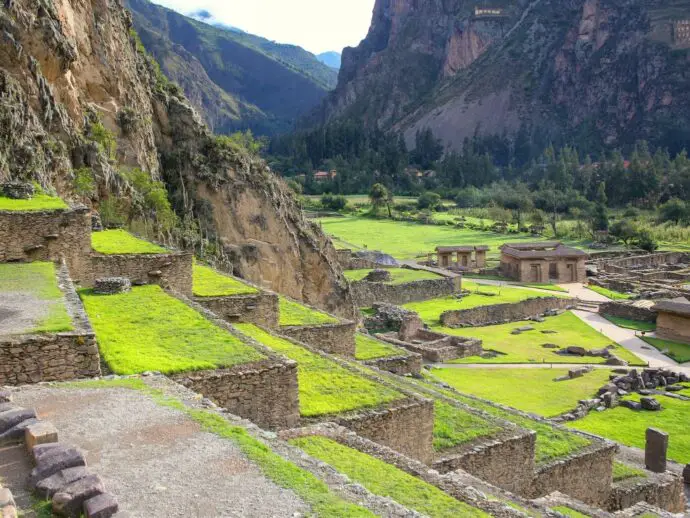
Ollantaytambo is one of the few sites where Spanish Conquistadors lost a major battle. Following defeat at Sacsayhuaman, Inca Manco Yupanqui retreated to this fortress and temple site and in 1536 the Spanish, led by Hernando Pizarro, tried to capture the fort and Manco Inca. The 70 cavalrymen and large number of foot soldiers could not climb the steep terraces to the fort and were bombarded with boulders and showered with spears and arrows. When the plain below was intentionally flooded by Manco Inca, the Spanish horses became bogged down and Hernando Pizarro ordered a retreat.
Where: 43 miles from Cusco, and 20 miles from Machu Picchu
How to get to Ollantaytambo: you can visit by road on a tour or independently, but the most fun way is by train enroute to, or on the way back from, Machu Picchu. There are plenty of guest houses in Ollantaytambo so it makes a great overnight stop.
Which Cusco Tourist Ticket: Partial Cusco Tourist Ticket Circuit III
SACSAYHUAMAN
Best for: vast archaeological magnificence close to Cusco
An impressive fortress-temple site perched on a hill overlooking Cusco, these dramatically situated ruins should be top of your list if this is your first visit to Cusco. Did you know that Sacsayhuaman is about 100 metres higher than Machu Picchu? In Quechua, the name ‘Sacsayhuaman’ means “satisfied falcon”, and it is believed that the complex was designed to resemble the head of a puma, with the rest of Cusco making up the body. No-one really knows why Sacsayhuaman was built. Possibly as a place of worship seeing as there were no known threats to the Incas when construction commenced, or perhaps it was simply positioned as a show of strength an intimidation.
Construction of Sacsayhuaman began during the reign of the 9th Inca ruler, Pachachut, back in the 15th Century. He was responsible for successful conquests in the Sacred Valley and is credited with founding Machu Picchu. Archaeologists believed it took 20,000 men and 70 years to build Sacsayhuaman, using rock quarried from 12 miles away. Although only 20% of the original structure remains today (thanks to the Spaniards who tore it down and used the rocks to build their houses), it’s still pretty impressive!
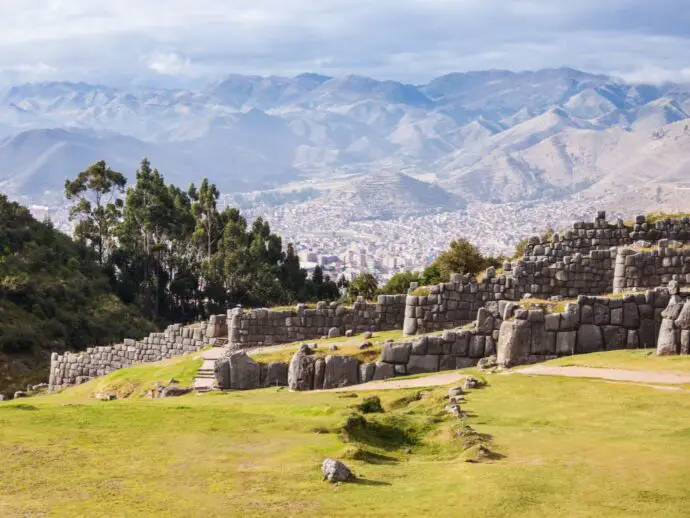
When you go to Sacsayhuaman, make sure you take a good look at the rocks, and notice that the shapes and joins are all irregular. This was to protect the complex from collapse during earthquakes, and you’ll see this same building method all over Cusco. The remaining complex consists of three areas: a three-tierd ‘zigzagged’ fortification resembling the teeth of a puma (some of the rocks weigh up to 125 tonnes); a hill called Rodadero where several towers once stood; and a large parade ground between the ramparts and the hill, which is still used today for ‘Inti Raymi‘, the Inca festival of the Sun.
Where: just over a mile outside Cusco.
How to get to Sacsayhuaman: if you’re acclimatised to the altitude, the walk from Cusco will take up to 45 minutes. Or you can get a taxi or visit as part of a tour. One of the most popular day trips from Cusco is the Sacsayhuaman – Q’engo – Puca Pucara – Tambomacha circuit, often easiest to do on a tour.
Which Cusco Tourist Ticket: Partial Cusco Tourist Ticket Circuit I
After you’ve visited Sacsayhuaman, pop along the road a short distance to Q’engo.
Q’ENGO
Best for: learning about rituals and sacrifices
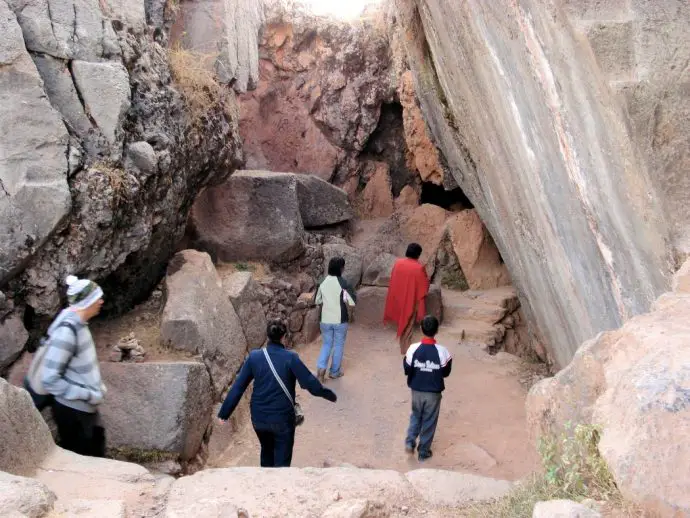
Qenqo is labyrinth or Zig-zag in Quechua, and was an Inca site used for rituals and possible sacrifices. The complex is hewn out of limestone rock stretching across a hill, consisting of an underground network of passageways, natural chambers, stone alter, zig-zagging channels and intricate carvings in the rocks. Adjacent to the main rock is a large amphitheatre, formed by an outer wall with 19 large niches, believed to have been used for ceremonial purposes. Some people think the niches were seats, whilst other research suggests they were foundations of a great wall. A mysterious upright rock in middle of amphitheatre, about 6 metres high, is thought to have originally been carved in the shape of a puma or other spiritual symbol. A large amount of the complex, including the mysterious upright rock, were destroyed by the Spanish Conquistadors as they tried to rid Cusco of Inca shrines.
Where: 4 miles outside Cusco and just a short hop from Sacsayhuaman.
How to get to Q’engo: it’s possible to walk to the site, or you can easily get a taxi from Cusco.
Which Cusco Tourist Ticket: Partial Cusco Tourist Ticket Circuit I
TAMBOMACHAY
Best for: another tick in the ruins box if you’re in the area
Tambomachay was built around 1500 AD using precision-cut stone, and may have been used for a number of purposes, from military and administrative to a spa for the elite, or a temple dedicated to water. Tambomachay is known as ‘El Baño del Inca’ or ‘Bath of the Inca’ due to an intricate system of channels that carries water through terraces and small cascades. The clear water originates from springs and legend says that the spring water has here has never run dry. Keep an eye out for the large ceremonial bath carved out of rock.
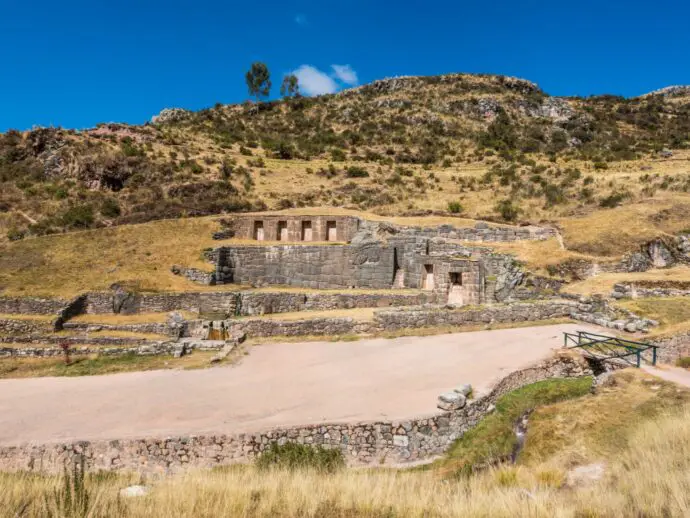
Where: 5 miles from Cusco, 300 metres from the main road.
How to get to Tambomachay: again, you can walk from Cusco but only if you’re acclimatised and feeling fit (it is 3670 m above sea level). Most people visit on a day trip from Cusco on an organised tour, with a guide.
Which Cusco Tourist Ticket: Partial Cusco Tourist Ticket Circuit I
PUCA PUCARA
Best for: small ruins with big views
This large Inca fortress was built at a strategic point on the road leading to Antisuyo province (Amazon corner of the Inca empire). It’s name in Quechua means “Red Fortress”. The ruins appear to have foundations believed to be towers and with high walls, which means Puca Pucara may have been built as protection from Amazonian tribes. Yet Puca Pucara also had canals, plazas, baths and separate rooms – so could it have been used as a resting place for travellers?
Pucu Pucara was built from mis-matching and irregular shaped rocks, completely out of character to other Inca sites. Some believe this is because the complex was built in a hurry. The site has not been maintained as well as others in area, and is of lesser importance so does not get same level of tourist attraction. We enjoyed seeing it as part of our day trip from Cusco with the above sites, but wouldn’t recommend making a special trip.
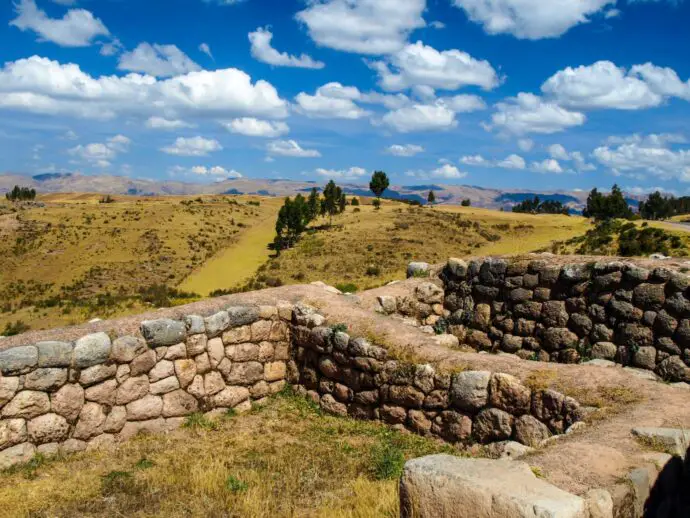
Where: 5 miles from Cusco, and a 5 minute walk from Tambomachay.
How to get to Puca Pucara: those who are acclimatised and feeling energetic can walk from Cusco, but most people take a taxi or join a day tour from Cusco.
Which Cusco Tourist Ticket: Partial Cusco Tourist Ticket Circuit I
TIPON
Best for: ancient water, dramatic views and having the place to yourself
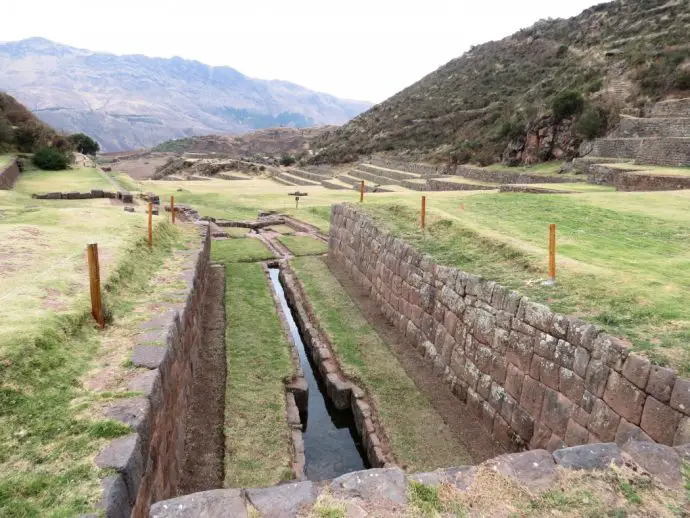
Tipon is one of the less-visited Inca sites, since it isn’t on the main Sacred Valley tourist trail, which means it remains relatively tourist-free and tranquil. In fact we didn’t see another foreign visitor all day during our tour. The archaeological site is hidden high in the mountains, and whilst it isn’t as large as other Inca sites, it has extremely well-preserved terracing with water channels that are still in operation today – keep an eye out for the fish!
It can be chilly at Tipon thanks to the high altitude (3500 m) and the wind coming down the mountain, so don’t forget a jumper. The town of Tipon down below is famous for cuy (guinea pig), and the traditional clothing that is still worn by many locals.
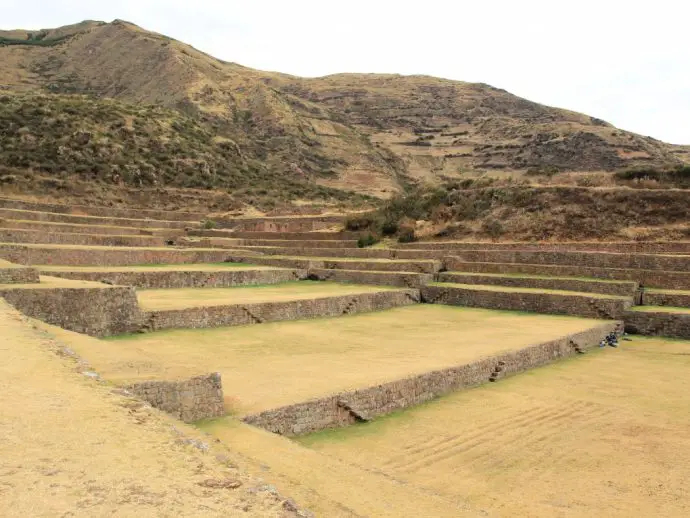
Where: 30 minute drive from Cusco in the South Eastern section of the Sacred Valley
How to get to Tipon: We did a tour of Tipon, Pikillacta, Andahuaylillas and Huaro (read about it here), and it was one of the best day trips from Cusco we’ve ever done. You can reach Tipon by public transport, but if you want to see any of the other sites along this stretch of the valley then the only way on is on a tour, or by hiring a car and driver.
Which Cusco Tourist Ticket: Partial Cusco Tourist Ticket Circuit II
PIKILLACTA
Best for: pre-history, intriguing tales and not a tourist in sight
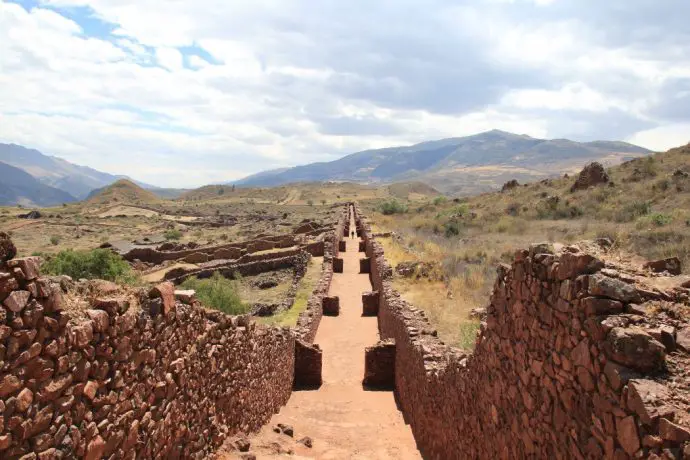
This place is amazing. Partly because…news flash…it’s NOT Inca, and partly because it’s still being excavated. Oh, and it has dinosaurs. Definitely one of our favourite day trips from Cusco.
Pikillacta is a seldom visited pre-Inca site that belonged to the Wari people and was built around 800AD. The complex is huge, spread over at least 50 hectares, with tens of hectares still waiting to be unearthed. It is considered to be one of the main cities of ancient Peru. It’s great fun wandering the ruins, listening to tales of queens, aqueducts and fleas (!), and watching the archaeologists at work. It really feels like walking through an undiscovered part of history. Oh, and the views aren’t bad.
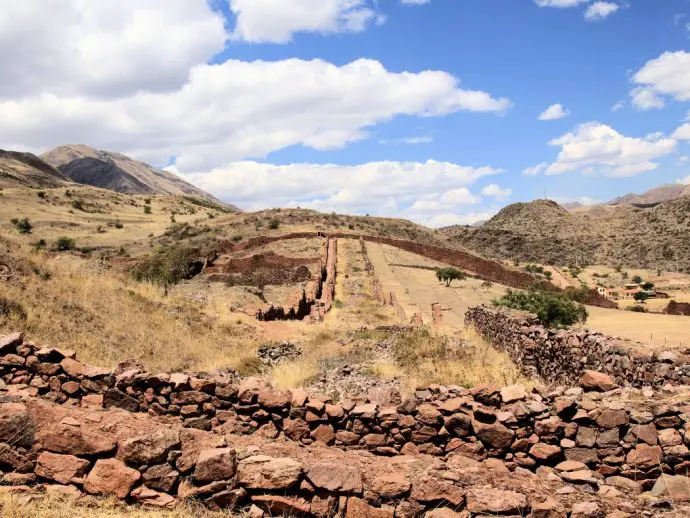
As for the dinosaurs, read our post about our day trip to Tipon and Pikillacta to find out more.
Where: 3 miles past Tipon
How to get to Pikillacta: on a tour, or by car (see Tipon, above).
Which Cusco Tourist Ticket: Partial Cusco Tourist Ticket Circuit II
ANDAHUAYLILLAS and HUARO
Best for: churches to rival the Sistine chapel and sleepy village life
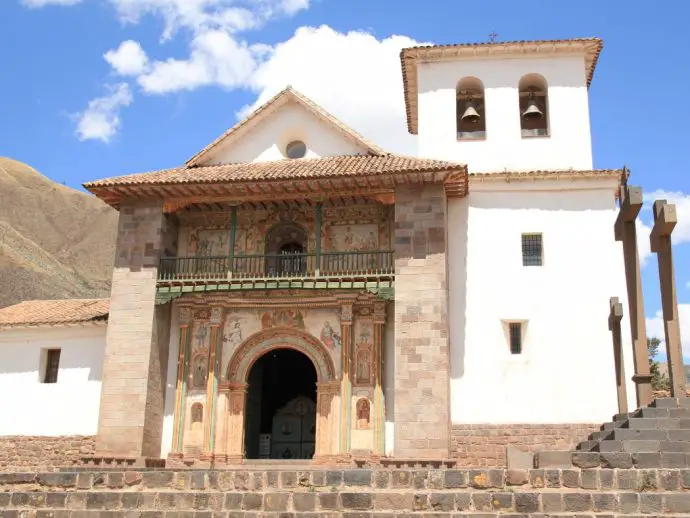
We stopped at these pretty Andean villages on our day trip to Tipon and Pikillacta, and were frankly astonished at the opulence inside the unassuming whitewashed churches, which are the main attraction of a visit here. The alters were covered in gold and silver, whilst intricate and colourful murals adorned the walls and ceilings.
Built by Jesuits in the 16th century, the Iglesia de San Pedro in Andahuaylillas is known as the “Sistine Chapel of the Andes“, and today is a UNESCO World Heritage Site. The Church of San Juan Bautista in Huaro is no less glamorous and is home to more than 60 sculptures and 50 paints from the Cusqueña School of Art.
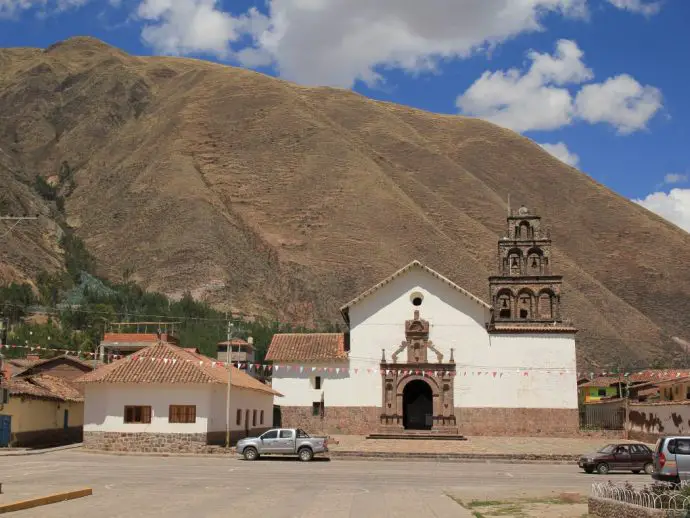
Where: Andahuaylillas is 28 miles from Cusco, and Huaro is just 2 miles further on.
How to get to Andahuaylillas and Huaro: on a tour or by car.
Entrance: not included in the Cusco Tourist Ticket, small entrance fees are payable locally at the churches.
CHINCHERO
Best for: weaving, ruins and a little-known Inca trail
Chinchero makes a great day trip from Cusco, although we actually stayed for a few nights at the gorgeous Inkaterra Hacienda Urubamba in the Sacred Valley, to make the most of this spectacular area and hike one of the Inca trails that hardly anyone knows about. It was a good move, and gave us more time to explore.
Chinchero is a small Andean town high on the windswept plains above the Sacred Valley. At 3765 metres above sea level it’s higher than Cusco, and known to the Incas as the birthplace of the rainbow. The museum, church and ruins are all located in the historic precinct and entry is via the Cusco Tourist Ticket. The church was built by the Spanish around 1607 on top on an Inca palace, and still has stunning ornately painted ceilings visible today. Chinchero was the country retreat for Inca Tupac Yupanqui and still boasts Inca walls, terraces (in use today), aqueducts and the massive wall in the main plaza has ten striking trapezoid niches. The colourful Sunday market is free to enter, and although it’s smaller than the one at Pisac, it still has a great selection of gifts.
Chinchero is referred to by many as the centre of traditional weaving in Peru, with many demonstrations available to tourists. Cooperatives offer an insight into how alpaca wool is washed, dyed and spun, and demonstrations are free although voluntary donations are appreciated. If you do want to purchase any gifts, don’t worry, they accept all major credit cards!
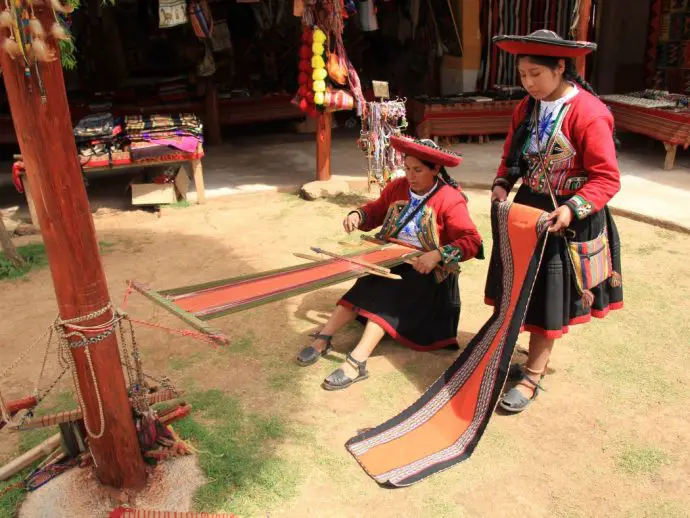
If you’re feeling energetic there’s a fantastic hike down an ancient Inca Trail to the rural village of Urquillos in the Sacred Valley (also a great day trip if you’re staying in the Urubamba area). It’s steep, dramatic and absolutely worth the days of aching knees afterwards. I’ll be writing about this hike soon, so watch this space!
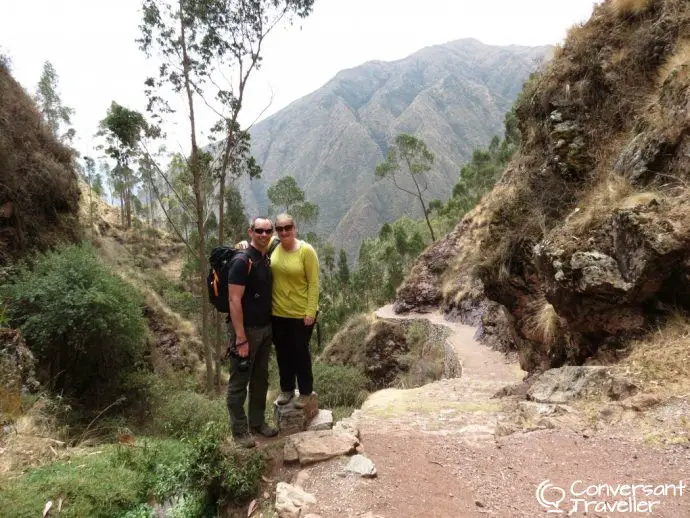
Where: 19 miles north east of Cusco
How to get to Chinchero: on a guided day trip from Cusco or as an excursion during a stay near Urubamba. It’s just off the main road that runs between Cusco and Urubamba.
Which Cusco Tourist Ticket: Partial Cusco Tourist Ticket Circuit III
QUAD BIKING/ATV
Best for: sightseeing with a bit of adrenaline thrown in
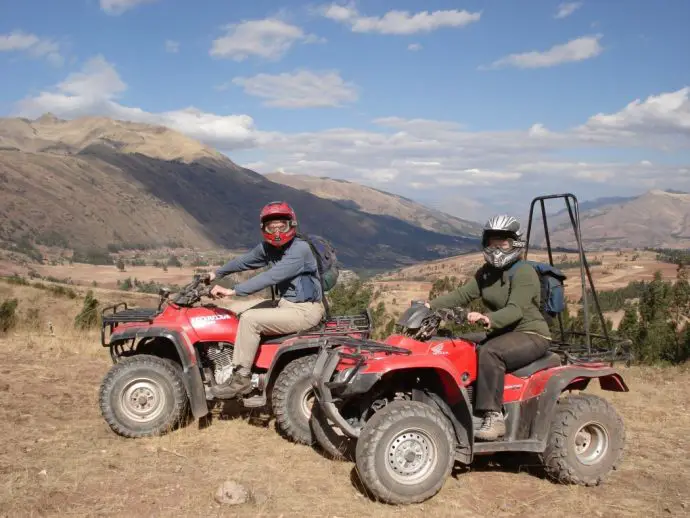
It’s not all about ruins, it’s about adrenaline too! We loved zooming about on quad bikes across plateaus, down valleys and through villages, it’s a fun way to explore and great fun too. There a lots of tour operators offering quad bike tours from Cusco, and you can either pre-book or walk in off the street. Just do your research first and check that the operator is reputable and offers all the correct safety gear (helmets, glasses and gloves).
Quad biking trips from Cusco are usually a half- or full day, and most guides speak some English, although this is also something to check before you book. Most companies offer a pick-up service from your hotel as you may have to travel out of Cusco to the starting point. Depending on the type of tour, make sure you have some spare cash on you as entrance to any archaeological sites will usually not be included.
Where: Quad biking/ATV trips around Cusco can include places like Moray, Salinas de Maras, and various sites in the Sacred Valley.
Top tips: make sure your insurance covers quad biking (many policies won’t and you’ll have to add it as an extra). Lunch is generally excluded if you’re on a day tour, and you should be asked to present your driving license, so make sure you have it with you.
RAFTING
Best for: seeing the Sacred Valley from a different angle
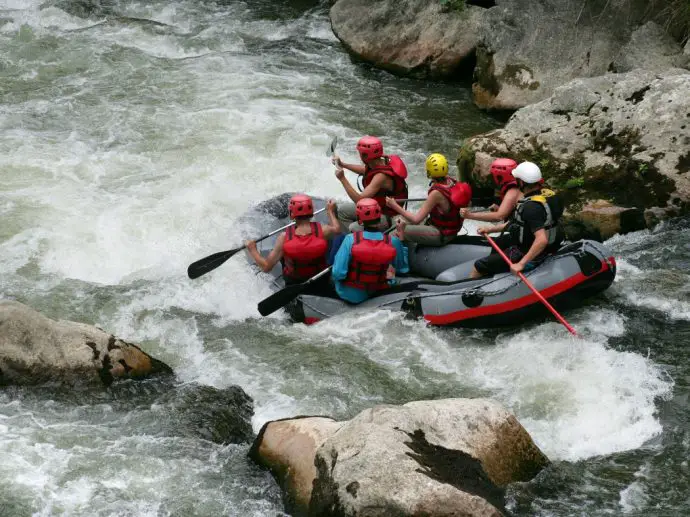
White water rafting on the Urubamba River is one of the best ways to really get to know the Sacred Valley, and see the imposing valley slopes from a unique angle. Again there are several tour operators running tours, after all it’s one of the most popular day trips from Cusco, and they generally begin a 1½ to 2 hour drive out of the city. Water levels are dependent on the time of year (it’s best between May and December), and the levels range from grade II – IV. The Cusipata section of the Urubamba river is generally less crowded than Ollyantaytambo section.
Top Tips: Costs generally include all safety kit, wetsuit, bilingual guide, transport from Cusco, and lunch. Some tours offer hot showers and a sauna, so choose wisely! Wear suitable clothing and sandals – you’re going to get wet – and don’t forget a towel and warm clothing to change into at the end. Also, make sure rafting is covered by your travel insurance.
The Cusco Tourist Ticket
What is the Cusco Tourist Ticket
If you’re staying in Cusco for a few days and plan on visiting multiple Cusco tourist sights, then it will be worth purchasing the tourist ticket. There are 4 types of Cusco Tourist Ticket, so think carefully about which sites you want to see and how many day trips from Cusco you can realistically fit in.
How to buy the Cusco Tourist Ticket
You can’t buy these before your arrival in Cusco, but just head to the Tourism Offices on either Avenida El Sol or Calle Mantas (both near the main square) to purchase them when you arrive. Alternatively you can purchase the Cusco Tourist Ticket at the attractions themselves, or if you’re doing an organised Sacred Valley tour then the entrance is usually included. You may need to produce your passport both at time of purchase and at some of the attractions. We have found this to be the case at several of the sites.
Cusco Tourist Ticket types
Full Ticket:
16 attractions within Cusco and the Sacred Valley | Valid for 10 days | Cost S/.130
Sacsayhuaman, Qenko, Puca Pucara, Tambomachay, Museo de Arte Popular, Museo Histórico Regional, Museo Municipal de Arte Contemporáneo, Museo de Sitio de Korikancha, Centra Qosqo de Arte Nativo, Monumento de Pachacutec, Tipón, Pikillacta, Pisac, Ollantaytambo, Chinchero, Moray
Partial Cusco Tourist Ticket Circuit I – Sacsayhuaman (BTCPI):
4 of the main attractions outside of Cusco | Valid for 1 day | Cost S/.70
Sacsayhuaman, Qenko, Puca Pucara, Tambomachay
Partial Cusco Tourist Ticket Circuit II – City and South Sacred Valley (BTCPII):
8 attractions, including some of the lesser visited sites | Valid for 2 days |Cost S/. 70
Museo de Arte Popular, Museo Histórico Regional, Museo Municipal de Arte Contemporáneo, Museo de Sitio de Korikancha, Centra Qosqo de Arte Nativo, Monumento de Pachacutec, Tipón, Pikillacta
Partial Cusco Tourist Ticket Circuit III –Sacred Valley (BTCPIII):
4 attractions in the Sacred Valley outside of Cusco | Valid for 2 days | Cost S/.70
Pisac, Ollayntaytambo, Chinchero, Moray

